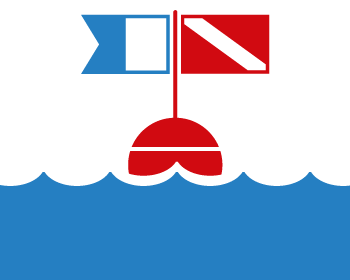
DAN Europe's Propeller Injury Prevention Campaign focuses on the concept of risk management from two points of view, the boaters' and the divers'.
Of all the various types of diving injuries, those involving propellers are the most frightening. Sadly, several divers have been killed or seriously injured by propellers.
We believe that many of these accidents can easily be prevented by raising awareness, exercising good seamanship and respecting some basic rules as a diver.
Stay at least 100 metres away from diver-down / alpha flags, unless conducting SCUBA, snorkel or free diving activities.
Bear in mind that divers often have difficulty estimating distance underwater and could drift away from the flag.
Don’t let anyone onto the swim platform while the engine is in gear. Swim platforms tend to be slippery and divers could fall into the propeller.
If you are leading a group of divers, make sure that divers entering the water do not come close to the propeller: they are sharp and dangerous, even when they’re not moving.
Allow easy and safe re-boarding.
Before starting the engine, make sure no diver is in the vicinity or under the boat.
Always place the diver-down / alpha flag before diving. The flag can be attached to a float or mounted on a vessel and clearly visible from all directions.
Always surface within 50 mt. of your dive flag, or close to the reef, if there's one.
Use a surface marker buoy if an emergency surfacing far from the diver-down flag is needed.
Watch your buoyancy and avoid uncontrolled ascents.
While ascending, look around and pay utmost attention.
The diver down flag
or scuba flag, or Alpha flag
is a protection and warning signal, used on the water to indicate that there is a diver below, and vessels (ships, boats, surfers, etc.) should keep well clear at slow speed. It can be either a blue and white pennant which is divided vertically in the middle, or a red flag with a white diagonal stripe.

